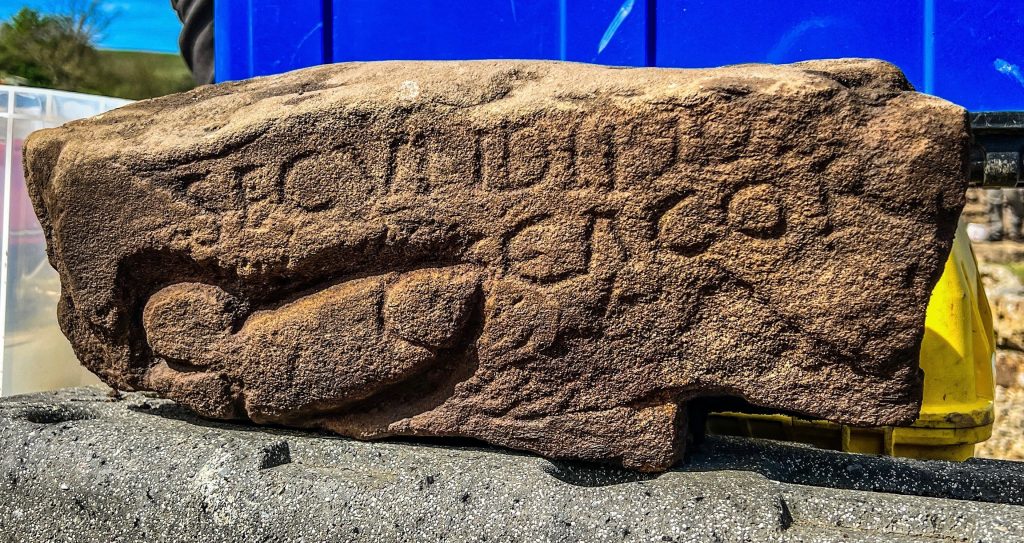- Carved graffiti depicting a penis and a crude insult has been discovered near Hadrian's Wall.
- The graffiti suggests a personal feud between two Romans over 1,700 years ago.
- Along with the phallic symbol, a Latin insult calling someone a "shitter" was found carved into stone.
An ancient piece of graffiti depicting a penis has been discovered near Hadrian's Wall, northern England, suggesting a personal feud between two Romans.
The phallic carving, which dates back more than 1,700 years, was found in stone along with a crude insult in Latin that experts say roughly translates to "Secundinus, the shitter."
Dr Andrew Birley, the director of excavations and CEO of the Vindolanda Trust said that the inscription "raised our eyebrows."
"Its author clearly had a big problem with Secundinus and was confident enough to announce their thoughts publicly on a stone. I have no doubt that Secundinus would have been less than amused to see this when he was wandering around the site over 1,700 years ago," Birley said in a statement.
The stone, measuring 15 inches wide by 5 inches tall, was discovered by Dylan Herbert, a retired biochemist from South Wales who was volunteering on the excavations.

"It looked from the back like all the others, a very ordinary stone, but when I turned it over, I was startled to see some clear letters," Herbert said.
"Only after we removed the mud did I realize the full extent of what I'd uncovered, and I was absolutely delighted."
Although the Roman phallus was often seen as a good luck charm or symbol of fertility, experts said that in this case, the author had subverted it as a personal insult.
Along with the phallic image, the stone featured the words "Secvndinvs Cacor." Specialists in Roman epigraphy said the phrase was a mangled version of "Secundinus cacator," which translates to "Secundinus, the shitter."
Researchers said each letter had been "carefully carved," demonstrating the "depth of feeling held" by the author towards Secundinus.
The phallic carving is the 13th to be found at the Vindolanda site over years of extensive excavations.










